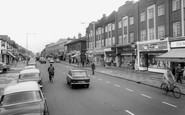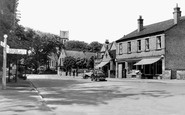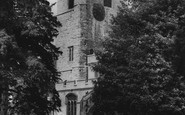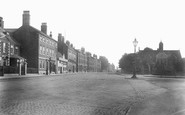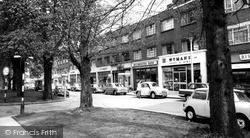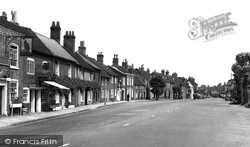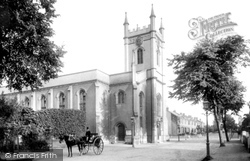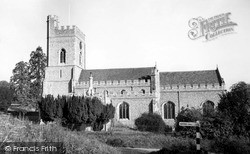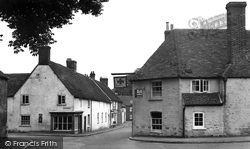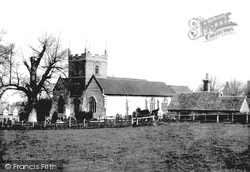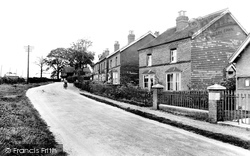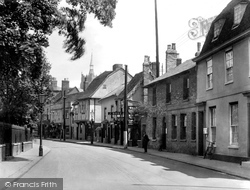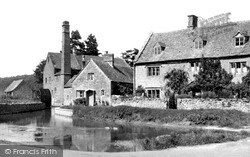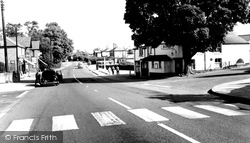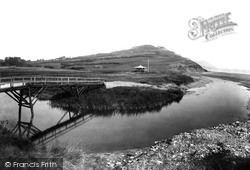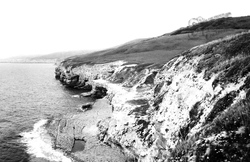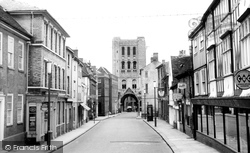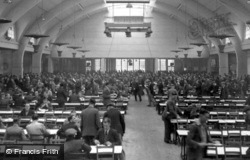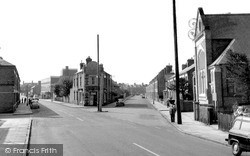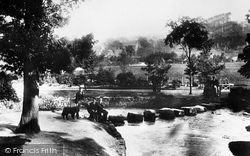Places
2 places found.
Those places high-lighted have photos. All locations may have maps, books and memories.
Photos
5 photos found. Showing results 81 to 5.
Maps
29 maps found.
Books
Sorry, no books were found that related to your search.
Memories
669 memories found. Showing results 41 to 50.
Mossford Garage
I started work at the age of 15 years as 'the boy', apprentice mechanic at Mossford garage. I remember going down the High Street to Pither's bakeries to get ham and cheese rolls, as well as pies for the mechanic's tea breaks. ...Read more
A memory of Barkingside in 1965 by
Childhood
In the 1960s I lived in Ogilvie Terrace and spent lots of days wandering happy and safe in Deri. I remember the nut wood, picking whinberries, Doreen's shop, the gas pipes where we balanced and luckily did not come to harm, the horse-shoe ...Read more
A memory of Deri in 1960 by
Going To Junior School In Radcliff On Trent In 1960
My dad was in the Canadian Air Force (RCAF) stationed in Langar (born in England though) but my family lived at 16 Douglas Close just outside Radcliffe. I remember walking daily to ...Read more
A memory of Radcliffe on Trent in 1960 by
Evacuee
I was evacuated from London to Oxford with Burlington School on 1st September 1939. At first we had our lessons in the old Milham Ford School premises but after a few weeks transferred to the new school in Marston where we shared the ...Read more
A memory of Oxford in 1940 by
The Roxy
Saturday mornings at The Roxy, Barkerend Road, Bradford were a magical event in the lives of 8 year olds plus in the 1950's. The film breaking down which it did every week to the sounds of a hundred kids stamping and yelling and ...Read more
A memory of Bradford in 1953 by
I Break My Arm
Soon after the end of WW2, we stayed in Frampton on Severn, at the home of my Uncle Percy and his wife Mary. My Uncle Percy worked on an Estate, possibly Frampton Court. With some of the local lads we liked to visit, what ...Read more
A memory of Frampton On Severn in 1947 by
Morning Service At St Mary's In The 1960s
Like many young folks of the 1960s who grew up in Cheshunt churchgate area, when the time came to marry you almost always chose St Mary's as the place to have your wedding. It is a lovely old church. I ...Read more
A memory of Cheshunt in 1965 by
Aspull Born And Bred
I was born in Bolton Road, Aspull. I started at St Elizabeth's School when I was four and a half. Didn't have far to travel - just cross the road (no cars then) and walk 10 yards and I was there. First day was with my gas-mask ...Read more
A memory of Aspull
When We Were Kids
When we were kids in Fishcross we used to go fishing most weekends, play in the woods, go to the Dam, climb and fish the Ochill Hills, Tooks Pond for eggs, go to the pictures etc. I knocked about with Charlie and John Bradley, ...Read more
A memory of Fishcross in 1948 by
Pastures Avenue, Nottingham
I remember Clifton in a different light. We lived at 17 Pastures Avenue during 1966/7, my brother or one of them, he's the youngest, was born there. I met my half sisters and brothers there. I have always liked ...Read more
A memory of Newark-on-Trent in 1967 by
Captions
388 captions found. Showing results 97 to 120.
Don Lovelock remembers going in to buy loose biscuits weighed out from the tin and the assistant breaking a piece off to make it up to a pound.
The retention of the trees softening their setting is to be welcomed - but for how long, when in most parts of London insurance companies break out in a cold sweat at the very sight of a suburban tree.
If greater prosperity meant that more people could take a week's break, there were still many more who were left behind.
From further west this view gives a good idea of the Georgian and later brick frontages added to the mainly 17th century timber-framed cottages lining the High Street and giving the town its distinctive
Dating from about 1912 and now the NatWest Bank, it is in Queen Anne style using grey brick with fiery red brick dressings, deep modillioned eaves and large pedimented dormers.
St Mary's was built between 1877 and 1878 by John Cundall in brick with a prominent steeple. The interior is brick-lined. The tower was a mere 75 feet high and has been cemented over.
still is, the main east/west route through the town, passing St Wilfrid's Church and Victoria Park with distant views of the South Downs; it encouraged en route travellers to stop and have a break
In 1960, at nearby Stoney Hill, bricks were still being made by hand. Four brick makers were moulding and firing about 3,200 bricks per day.
We are looking northwards towards the Square (centre), with 18th-century brick and tile houses on both sides of Wimborne Street.
The Baptist Tabernacle and the Gas Board showrooms are to the right, whilst on the left stands the red brick Riflemans Hotel, which dates from 1888.
The bold square brick tower was built onto a 13th-century base c1656 after an earlier tower had collapsed.
In its place stands a row of brick terraced cottages. In the distance, the thatched building with the brick chimney forms part of the original village school and the School House.
Charcoal-making was a forest industry until the 1960s, and was carried out on sites within the forest.There were two brick works in the village.A road of brick cottages is seen next to the Wesleyan
The Gothic west front with a Decorated-style window and the gable tower were added in 1891 in white brick, almost masking the earlier red-brick 'preaching-box' behind.
A water mill has stood here since Norman times, but this red brick corn mill dates from the early 1800s.
The inquiry into the disaster led to three disagreeing reports in 1937 on the causes of the disaster and the owner William Bonsall was convicted on eight counts of breaking mining safety laws, yet he was
We are looking eastwards from the blocked mouth of the River Char, which ends its journey to the sea by having to break through a ridge of shingle (right).
Romantically named for the sea breaking across its rocks, Dancing Ledge is a mile south of Langton Matravers village.
This had been the Norfolk Coffee House; it was rebuilt in white brick in 1838.
Up to the 1970s, the Royal Oak public house offered a welcome break to travellers before they moved on to London or Thrapston.
After the war there were no more production workers' lunch breaks or children's parties here, as output became everything.
These red brick terraces were built to house the employees of hosiery and shoe manufacturers at the turn of the century.
Looking west along the High Street, we see buildings which are characteristic of North Norfolk: flints set in mortar, with brick facings.
This park was laid out for the benefit of working people to give them a break from the dust and grime of industrial Sheffield.
Places (2)
Photos (5)
Memories (669)
Books (0)
Maps (29)

